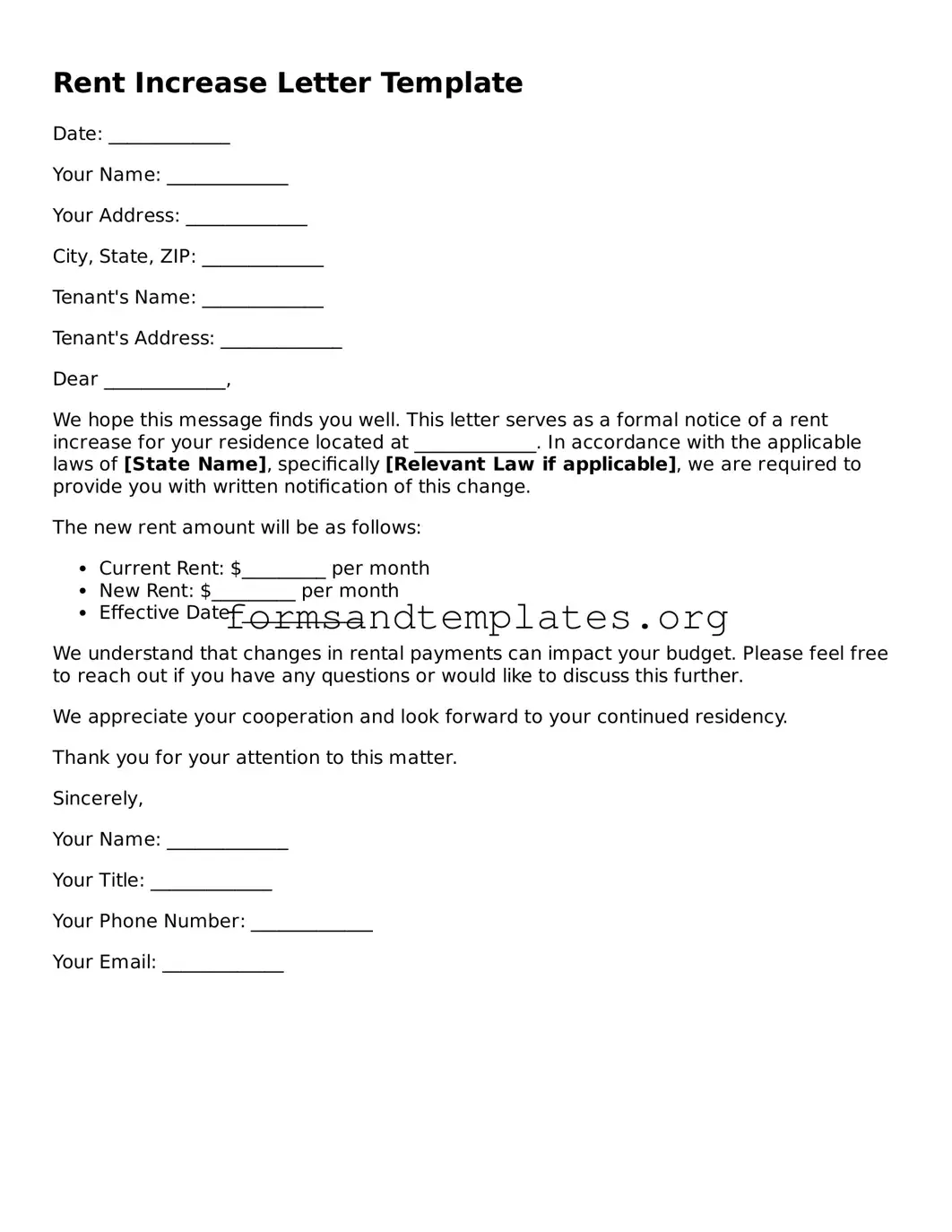Rent Increase Letter Template
Date: _____________
Your Name: _____________
Your Address: _____________
City, State, ZIP: _____________
Tenant's Name: _____________
Tenant's Address: _____________
Dear _____________,
We hope this message finds you well. This letter serves as a formal notice of a rent increase for your residence located at _____________. In accordance with the applicable laws of [State Name], specifically [Relevant Law if applicable], we are required to provide you with written notification of this change.
The new rent amount will be as follows:
- Current Rent: $_________ per month
- New Rent: $_________ per month
- Effective Date: _____________
We understand that changes in rental payments can impact your budget. Please feel free to reach out if you have any questions or would like to discuss this further.
We appreciate your cooperation and look forward to your continued residency.
Thank you for your attention to this matter.
Sincerely,
Your Name: _____________
Your Title: _____________
Your Phone Number: _____________
Your Email: _____________
